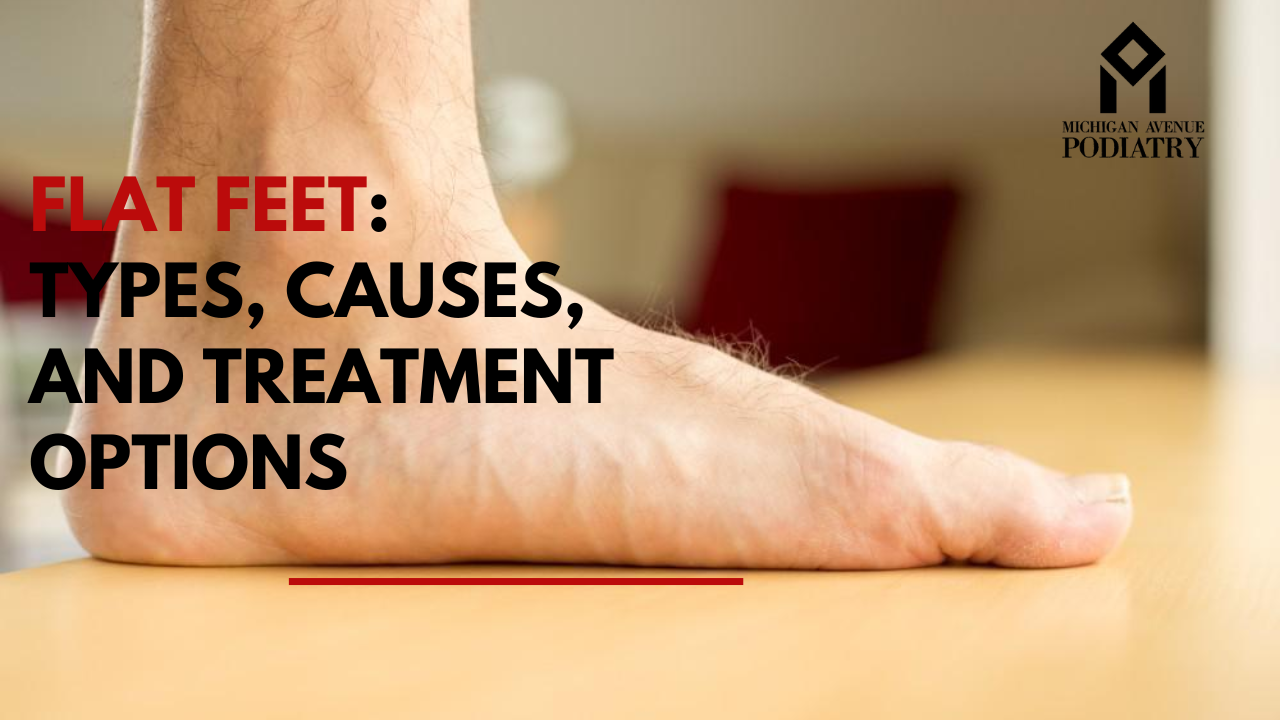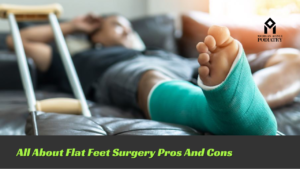Flat feet, also known as flatfoot or fallen arches, is a common condition where the arches of the feet collapse, causing the entire sole to come into contact with the ground. While some individuals with flat feet may not experience any symptoms or discomfort, others may develop foot pain, swelling, or difficulty with mobility. In this comprehensive guide, we will explore the different types of flat feet, the various causes behind this condition, and the available treatment options recommended by podiatrists.
Types of Flat Feet:
- Flexible Flat Feet: In flexible flat feet, the arches appear normal when the individual is sitting or standing on tiptoes, but they flatten when weight is placed on the feet. This type of flat foot often does not cause symptoms and may not require treatment unless it leads to discomfort or affects foot function.
- Rigid Flat Feet: Rigid flat feet, also known as fixed flat feet, maintain a flattened position regardless of whether the individual is bearing weight or not. This type of flat foot may be associated with structural abnormalities in the bones or joints of the foot and can cause significant pain and limitations in mobility.
Causes of Flat Feet:
Flat feet can develop as a result of various factors, including:
- Genetics: Flat feet can be inherited, with some individuals predisposed to having reduced or absent arches due to their genetic makeup.
- Muscular weakness: Weakness or imbalance in the muscles and tendons that support the arch of the foot can contribute to the development of flat feet.
- Injury or trauma: Trauma to the foot, such as fractures or sprains, can damage the structures that support the arch and lead to the development of flat feet.
- Medical conditions: Certain medical conditions, such as arthritis, diabetes, or neurological disorders, can affect the muscles, tendons, and ligaments of the feet, increasing the risk of flat feet.
- Obesity: Excess body weight can place added stress on the feet and contribute to the collapse of the arches, especially in individuals with predisposing factors.
Treatment Options for Flat Feet:
Treatment for flat feet aims to alleviate symptoms, improve foot function, and prevent complications. Common treatment options recommended by podiatrists include:
- Orthotic inserts: Customized shoe inserts, known as orthotics, can provide support and alignment for the feet, helping to distribute pressure evenly and reduce strain on the arches.
- Footwear modifications: Choosing supportive, well-fitted shoes with adequate arch support and cushioning can help alleviate symptoms of flat feet and improve overall foot function.
- Physical therapy: Specific exercises and stretches prescribed by a physical therapist can help strengthen the muscles and tendons of the feet, improving stability and mobility.
- Weight management: Maintaining a healthy weight can reduce the strain on the feet and lower the risk of complications associated with flat feet.
- Surgery: In severe cases of flat feet where conservative treatments fail to provide relief, surgical intervention may be considered to correct structural abnormalities or realign the bones and joints of the foot.
Conclusion:
Flat feet is a common condition that can cause discomfort and affect foot function for some individuals. By understanding the different types of flat feet, the underlying causes, and the available treatment options recommended by podiatrists, individuals can take proactive steps to manage their condition effectively. Whether through orthotic inserts, footwear modifications, physical therapy, or surgical intervention, there are various approaches to alleviate symptoms and improve the quality of life for individuals with flat feet. If you’re experiencing foot pain or discomfort related to flat feet, consult with a podiatrist for personalized evaluation and treatment recommendations tailored to your specific needs. With proper care and management, you can find relief and regain mobility in your feet.



